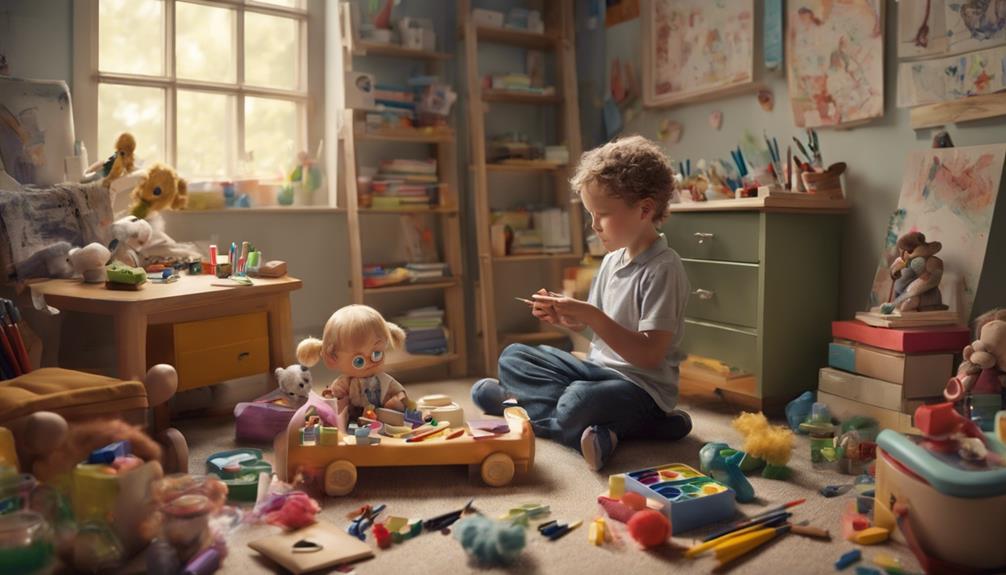When kids move out, many couples go through a change in dynamics that can bring unforeseen challenges. The effects of an empty nest on a marriage are frequently ignored, but the intricacies that come up during this time can be significant.
Exploring the intricacies of navigating divorce post-empty nest requires a deeper understanding of the unique struggles faced by couples during this transitional period.
Key Takeaways
- Empty nest can expose marital issues, leading to divorce.
- Communication and understanding are crucial during this transition.
- Financial and emotional challenges require careful navigation.
- Prioritize self-growth, renewed connection, and fair resolutions for a successful transition.
Empty Nest Syndrome and Divorce
Navigating the complexities of empty nest syndrome and potential divorce can be a challenging and emotional journey for many couples. The transition from a bustling household to an empty nest can unearth hidden marital issues, leading to significant challenges for empty nesters. Marital dissatisfaction, long buried under the responsibilities of parenting, may surface, causing couples to question their compatibility and future together. The once vibrant marital home may now feel like a place of tension and unease.
During this delicate phase, communication strategies become crucial. It's essential for couples to openly express their emotions, fears, and desires. Staying together requires active listening, empathy, and a willingness to work through the difficulties that arise. Reevaluating shared goals and finding new ways to connect can help bridge the gap that empty nest syndrome often accentuates.
Coping Strategies for Empty Nesters

How can empty nesters effectively cope with the emotional challenges of this major life transition? It's crucial to acknowledge the impact of children leaving home on our relationships and mental well-being.
Here are some strategies to help navigate this phase:
- Open Communication: Sharing feelings and concerns openly with your partner can foster understanding and support during this transition. Communication is key in navigating the empty nest phase and can help prevent misunderstandings.
- Reconnecting and Strengthening Relationships: Take this opportunity to rediscover yourselves as individuals and as a couple. Investing time and effort into strengthening your relationship can lead to a deeper connection and a renewed sense of companionship.
- Setting New Goals and Prioritizing Quality Time: Establishing new goals together can provide a sense of purpose and direction. Additionally, prioritizing quality time spent together can help maintain a strong and fulfilling relationship post-empty nest. Remember, this is a new chapter in your lives to embrace together.
Tricky Issues in Empty Nest Divorce
Dealing with tricky issues in empty nest divorce can be emotionally challenging, requiring careful consideration and support throughout the process. When it comes to child custody and support arrangements, the well-being of the children should always be the top priority, even amidst the turmoil of the divorce.
Dividing property accumulated over the years can stir up disputes, with sentimental attachments adding a layer of complexity. Alimony considerations often bring to light the sacrifices made during the marriage, making it a delicate subject to navigate.
Emotional challenges such as grief, loneliness, and uncertainty about the future can further complicate matters, making it essential to lean on a support system for guidance. Addressing these contentious issues requires patience, empathy, and open communication.
Legal considerations play a crucial role in ensuring a fair resolution for both parties, especially when unique circumstances like military divorce or post-divorce living arrangements come into play. By approaching these tricky issues with understanding and cooperation, a smoother transition into the next phase of life can be achieved.
Critical Challenges in Empty Nest Divorce

As couples navigate the emotional aftermath of their children leaving home, critical challenges in empty nest divorce often surface, requiring careful consideration and support. Empty nest divorce can be a tumultuous time, marked by various emotional challenges like grief, loneliness, and communication breakdowns. These difficulties can strain the relationship as couples grapple with redefining their roles and adjusting to new dynamics without the constant presence of their children. Moreover, the financial implications of asset division, alimony considerations, and updating wills add another layer of complexity to the already delicate situation.
- Emotional Turmoil: Grief and loneliness can intensify during empty nest divorce, making it crucial for couples to support each other through these feelings.
- Role Redefinition: The process of redefining roles and relationship dynamics requires patience, understanding, and open communication to navigate successfully.
- Financial Hurdles: Addressing financial implications such as asset division and updating legal documents is essential for a smoother transition in an empty nest divorce.
The Trend of Empty Nest Divorce
The increasing prevalence of empty nest divorce, often referred to as 'gray divorce,' sheds light on the evolving dynamics of relationships among baby boomers. As couples transition into the empty nest phase, many face unexpected challenges that can strain their marriage. The absence of children in the household can amplify existing issues, leading to feelings of sadness and loss. Baby boomers, who may have neglected their relationship amidst the demands of parenting, now find themselves grappling with personal behaviors that contribute to marital discord.
It's crucial for couples experiencing empty nest divorce to acknowledge these relationship challenges and work towards understanding each other's perspectives. The shift in daily routines post-children departure can unearth underlying issues that were previously masked. By fostering open communication and addressing neglected areas, couples can navigate this phase with empathy and resilience. Despite the sadness that comes with the end of an era, the opportunity for personal growth and renewed connection remains within reach for those facing gray divorce.
Frequently Asked Questions
At What Age Is a Child Most Affected by Divorce?
We believe children between 6 and 12 may feel divorce most profoundly. Their awareness can lead to feelings of guilt. Teenagers, especially mid to late teens, also face significant impacts due to their stage of development.
What Happens to Marital Satisfaction After Kids Leave Home?
Once kids leave, our relationship blooms like a field in spring. Stress eases, bonds deepen, and love reignites. We find joy in shared moments and build a stronger, more intimate connection.
How Long Does It Take for Kids to Adjust to Divorce?
It typically takes children 1-2 years to adjust to divorce. Factors like age, temperament, and support levels impact this. Younger children may face immediate challenges. Emotional support, routine consistency, and open communication aid effective navigation of post-divorce changes.
What Type of Therapy Is Best for Children Going Through Divorce?
We find that a combination of play therapy, CBT, family therapy, art therapy, and group therapy can provide children with diverse tools to navigate the challenges of divorce. Each approach offers unique benefits and support.
How Can Parents Navigate Divorce After Their Children Leave Home?
Once children leave home, parents can focus on ways to cope with divorce. Seeking counseling or therapy can provide emotional support during this transition. Engaging in self-care activities, building a strong support system, and maintaining open communication with their ex-spouse are essential in navigating this challenging time.
Conclusion
As we navigate the challenges of empty nest syndrome and potential divorce, let's remember that we aren't alone in this journey. By communicating openly, seeking guidance from therapists, and setting new goals together, we can overcome these obstacles.
Let's embrace this transition as an opportunity to strengthen our relationship and create a new chapter filled with love, understanding, and growth.
Together, we can weather this storm and emerge stronger than ever before.










